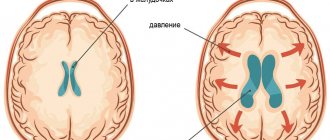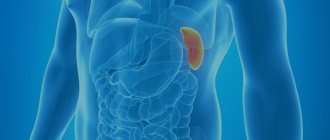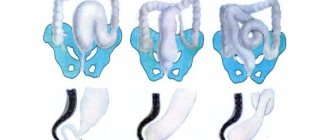The first symptoms of laryngotracheitis, treatment regimen and prevention rules
Laryngotracheitis in adults is a rather serious infectious disease. Its danger lies in the fact that the infection affects the trachea and pharynx.
This disease occurs if an adult has a severely weakened immune system. Laryngotracheitis in adults most often develops against the background of a severe cold. They say that most often laryngotracheitis occurs in those people whose work is related to public speaking - teachers, lecturers, TV presenters.
Causes of acute laryngotracheitis
There are many reasons and prerequisites for the occurrence of acute laryngotracheitis. Almost always it is of an infectious, viral or bacterial nature.
Acute laryngotracheitis is observed in the following diseases:
- Parainfluenza;
- Flu;
- Adenoviral infection;
- ARVI and acute respiratory infections;
- Chlamydial infection;
- Staphylococcal infection;
- Chickenpox;
- Scarlet fever;
- Measles;
- Rubella;
- Syphilis;
- Mycoplasmosis;
- Streptococcal infection;
- Tuberculosis of the larynx;
- Pneumococcal infection.
Laryngotracheitis occurs with the above types of diseases in case of weakened immunity in general. Sometimes only the larynx or only the trachea may be affected. There are cases of acute laryngotracheitis for other reasons. Thus, the prerequisites for the disease may be allergic reactions of the body or the aggressiveness of chemicals. Herpes lesions of the respiratory system occur, causing acute laryngotracheitis.
General information
Laryngotracheitis (ICD-10 code J04.2/J37.1) is an inflammatory combined disease of the larynx and trachea of infectious-allergic origin, caused by an infectious agent of a viral or bacterial nature, occurring in acute or chronic form.
Of particular importance is acute laryngotracheitis (ICD-10 code J04.2) and especially its variety - acute stenosing laryngotracheitis (synonyms - false croup, acute obstruction of the respiratory tract), which is characterized by broncho-obstructive syndrome (narrowing of the lumen of the larynx), accompanied by respiratory disorders and development symptoms of acute respiratory failure. It is important to understand that acute stenosing laryngotracheitis is an emergency condition that requires clear diagnosis and emergency treatment already at the prehospital stage. Acute stenosing laryngotracheitis (ASLT) is an extremely pressing problem in childhood, due to its high prevalence, pronounced dynamics of clinical symptoms, high risk of developing bacterial complications over a short period of time and death. In the last decade, there has been a sharp increase in the incidence of respiratory viral infections, which are accompanied by obstruction of the respiratory tract and the largest share falls on stenosing laryngotracheitis. Moreover, at the moment, a distinctive trend in the course of OSLT is its tendency to relapse with the possibility of transformation into bronchial asthma.
The frequency of OSLT is directly proportional to the epidemic situation regarding the incidence of ARVI. Symptoms of laryngotracheitis occur in almost 50% of patients with ARVI, and among this group, about 70% of cases show symptoms of progressive laryngeal stenosis. The peak incidence occurs in the autumn–winter period.
The incidence of acute laryngotracheitis, especially those accompanied by acute airway obstruction, among adults is significantly lower than in children. The prevalence of OSLT in different age periods varies significantly: in children 2-3 years of age, OSLT develops in more than 50% of patients with ARVI, in infancy (6-12 months) and in the 4th year of life it occurs in 34% and is quite rare in children over 5 years old. Most children with OSLT recover without specific treatment, but almost 15% of patients require hospitalization, and 5% of them require intubation. Boys get sick more often than girls (ratio 1.5/1).
Classification
There are three forms of the disease:
- catarrhal, in which redness and some swelling occurs in the area of the vocal cords and trachea.
- atrophic, gradual atrophy occurs in the area of the mucous membrane, due to which it loses its protective properties and becomes inflamed. Often occurs among smokers and coal mine workers, people working in dusty areas.
- hyperplastic, the growth of areas or the entire mucosal zone in the trachea and larynx is manifested, as a result breathing and voice suffer.
There are acute and chronic laryngotracheitis. Acute laryngotracheitis is divided into
- primary, which is detected for the first time,
- recurrent, occurring repeatedly, due to the occurrence of colds or the influence of unfavorable factors.
Primary acute laryngotracheitis can have three course options:
- acutely occurring, against the background of an existing acute respiratory infection,
- sudden laryngotracheitis without signs of acute respiratory infections,
- gradually arising as a complication of colds.
The course of acute laryngotracheitis can be continuous or wavy.
Chronic laryngotracheitis occurs when acute treatment is improper or in the absence of treatment. Often occurs due to professional overstrain of the ligaments.
Causes of chronic laryngitis
- general and local hypothermia;
- constant inhalation of allergens and aggressive chemicals;
- unfavorable working conditions (dusty rooms, hot dry air, increased background noise);
- regular voice exercises;
- smoking and alcohol abuse;
- a consequence of trauma, tracheal intubation;
- gastroesophageal reflux (GERD);
- chemical and thermal burn of the larynx2;
- untimely treatment of acute laryngitis.
It is also worth noting the causes of acute laryngitis, against which the process may also become chronic; they are divided into infectious and non-infectious.
| CAUSES | A COMMENT | ||
| causes: | Infectious causes | a comment: | 1.Viruses
2.Bacteria
|
| causes: | Non-infectious causes: | a comment: |
|
Signs
Acute laryngotracheitis in children and adults is manifested by the following symptoms:
- symptoms of general intoxication are clearly expressed;
- the throat is sore, which provokes a cough;
- barking cough (especially pronounced in a child);
- sore throat;
- voice changes. He becomes rough and hoarse. In more severe cases, aphonia is observed;
- respiratory dysfunction. A child or adult experiences wheezing, noise, and shortness of breath;
- increase in body temperature. Usually the readings do not exceed 38 degrees, but there are times when the temperature can rise to high numbers.
List of sources
- Blokhin B.M. Principles of providing emergency and emergency prehospital care to children and adolescents.
- Pediatrics. National leadership under. ed. A. A. Baranova - 2009.
- Zaitseva O.V. Croup syndrome in ARVI: modern aspects of therapy. //Emergency medicine. — 2006.-5(6)
- Clinic and diagnosis of acute stenosing laryngotracheitis in children with ARVI of various etiologies / V. F. Sukhovetskaya et al. // Children's infections. - 2004. - No. 1. - P. 10-15.
- Volosovets A.P., Krivopustov S.P. Modern approaches to the diagnosis and treatment of acute stenosing laryngotracheitis in children // Health of Ukraine. – 2007. – No. 18/1. – pp. 26-27.
- Karavaev V.E., Orlova S.N., Alenina T.M. Stenosing laryngotacheitis in children with acute respiratory diseases (clinic, diagnosis, treatment). Ivanovo, 2006.- 55 p.
Symptoms of acute laryngotracheitis
Acute laryngotracheitis is characterized by a rapid increase in symptoms. The severity of symptoms depends on the degree of damage to the tissues of the larynx and trachea.
- Infiltrative-purulent or phlegmonous laryngotracheitis, which is characterized by damage to the underlying layers of the mucosa, muscles, cartilage, is characterized by a rise in temperature to 38C - 39C.
- Catarrhal laryngotracheitis, which is characterized by damage to the internal mucous membrane and the release of mucous discharge, is characterized by a satisfactory condition of the patient, normal or slightly elevated temperature.
Acute laryngotracheitis is accompanied by severe pain in the throat and difficulty when trying to take a sip of liquid. The patient loses his appetite, he experiences increased symptoms of intoxication, and his overall condition worsens significantly.
Also characteristic symptoms of laryngotracheitis are changes in voice. It becomes hoarse, rough, and loses sonority. Laryngotracheitis is accompanied by a dry, barking cough, more often in the morning and at night. After a coughing attack, the patient feels pain in the chest. A cough can be triggered by taking a deep breath, laughing, or inhaling cold, polluted air. At first, the cough is dry, without phlegm. As the disease progresses, the cough is softened by the appearance of sputum. Over time, the sputum becomes mucopurulent and profuse. At the same time, pain, sore throat, and constant discomfort when swallowing are noted. Painful sensations occur when trying to talk, while exhaling, while inhaling. All changes are accompanied by a deterioration in general well-being.
A serious danger with laryngotracheitis is laryngeal stenosis. With this phenomenon, the access of air to the lungs is completely or largely stopped as a result of severe narrowing of the larynx.
Risk group
Laryngotracheitis is at risk for people who abuse alcohol and cigarettes. The risk group includes those living in places with poor ecology, as well as those with severe chronic diseases (heart, blood vessels, central nervous system, diabetes), and those who have congestive processes in the lungs, for example, bronchial asthma. People with all sorts of diseases of the nasopharynx that make breathing through the nose difficult or impossible can become infected with laryngotracheitis.
The development of the disease can be provoked by:
- eating very cold or hot food;
- tendency to allergies;
- shout.
People with reduced immunity are at risk.
Symptoms of chronic laryngotracheitis
Particular attention should be paid to cough. If in the acute form of laryngotracheitis it is episodic and paroxysmal, then in the chronic form of this pathology the cough is permanent. Moreover, the patient constantly experiences a feeling of discomfort in the pharynx and trachea, as well as frequent painful sensations behind the sternum. A constant persistent feeling that the throat is scratched, dry mouth, painful swallowing - this is an incomplete list of manifestations of chronic laryngotracheitis.
The most characteristic diagnostic sign is dysphonia or disturbances in the patient's voice function. Dysphonia can vary in intensity from mild “hoarseness” to complete inability to speak. Attempts to make sounds cause discomfort to the patient. This condition can be aggravated by certain climatic factors or various hormonal changes. Particularly severe forms of dysphonia occur in women during menopause, during pregnancy or during menstruation. This condition can be either periodic or permanent.
Persistent dysphonia indicates various morphological changes in the structures of the vocal cords. If the patient’s professional activity involves the need to constantly communicate and be in public, the slightest changes in voice timbre can become a psychologically traumatic factor for them. As a result of this, the patient’s psychosomatic state is disrupted: sleep dysfunction, constant nervous tension, depression or neurasthenia.
Drug treatment of tracheitis
The drug treatment regimen for acute tracheitis is drawn up taking into account the nature of the disease and the severity of the patient’s symptoms.
Impact on the cause
If the causative agent is a particular virus, antiviral agents are usually used, as well as immunostimulants (for example, preparations based on echinacea). For severe and protracted tracheitis of a bacterial nature, the doctor may introduce antibiotics into the treatment regimen. If the disease proceeds without complications, it is usually possible to cope with it without these remedies. But the decision on the rationality and duration of antibiotic therapy should be made only by a doctor. In some cases, with tracheitis, a bacteriological examination of sputum is carried out before starting treatment with antimicrobial agents. It is sown on nutrient media to determine the type of pathogen and its sensitivity to the main groups of drugs. This will help you choose the most suitable antibiotic.
Treating coughs and clearing the airways
When treating acute tracheitis, great attention should be paid, of course, to cough, the main symptom of the disease. For a dry, debilitating, nonproductive cough, medications that suppress the cough reflex are used. This measure may be necessary in the first days of tracheitis. At the next stage of the disease, the main goal of treatment is to clear the airways of the mucus that forms. To do this, it is necessary to facilitate its passage with the help of mucolytic and expectorant agents. But they cannot be used simultaneously with antitussive drugs. It is also unacceptable to suppress a wet cough. This is fraught with stagnation of sputum and the transition of inflammation to the underlying parts of the respiratory system, up to the development of bronchopneumonia.
Maintenance therapy
Herbal remedies may be helpful to relieve the symptoms of tracheitis. For tracheitis, they can be used in the form of decoctions and infusions. But a more convenient and reliable method of treatment is the use of ready-made herbal products with a carefully selected and balanced composition. For example, in a complex treatment regimen for tracheitis, you can include Doctor MOM® cough syrup, which contains extracts of licorice, elecampane, Vasiki adatodes, Indian nightshade and other medicinal plants - 10 medicinal plants in total. It is suitable for both adults and children over 3 years old. This remedy helps thin mucus and helps remove it from the respiratory tract, and also relieves inflammation. For adults, there are also herbal cough lozenges Doctor MOM® based on extracts of licorice, ginger and Emblica officinalis. They also soften coughs and have anti-inflammatory and expectorant effects. Such lozenges can be used as an aid in the treatment of tracheitis. They help cope with coughing attacks and ease the course of the disease.
First aid
With laryngotracheitis, it is very important to provide assistance to the sick person even before a medical visit. And the point here is not only in the own symptoms of the disease, but also in the peculiar psychological stress that manifests itself in the sick person, especially in a child.
- It is necessary to reassure the patient, since his increased excitement can provoke an increase in frequency and deepening of spasmodic attacks.
- Be sure to provide fresh air into the room.
- In case of acute laryngospasm causing suffocation, urgently induce a gag reflex using an accessible method (for example, by pressing on the root of the tongue).
- Give the patient a warm drink - milk, dried fruit compote, mineral water, preferably a slightly alkaline one. You can add a pinch of baking soda to the milk - this is very helpful in narrowing the larynx.
- The humidity in the room where the sick person is located should be high.
- Warm foot baths (water temperature - 38-40 degrees) help relieve acute attacks. However, they cannot be done against the background of elevated body temperature.
Treatment of chronic laryngitis
Treatment of a patient with chronic laryngitis should be comprehensive and include drug therapy: the use of anti-inflammatory drugs, enzymes, mucolytics, and inhalations. If necessary, surgical intervention and voice restoration treatment are possible.
During exacerbation of chronic laryngitis, antibacterial therapy is indicated.
Of great importance is the elimination of foci of infection in the pharynx and paranasal sinuses, treatment of gastroesophageal reflux and other associated pathologies.
Inhalation therapy takes a leading place in the treatment of a patient with chronic laryngitis . For inhalation, mucolotics, hormonal agents, herbal preparations with anti-inflammatory and antiseptic effects, and mineral water are used. The choice of drug depends on the form of inflammation: if edema predominates, inhalation with corticosteroids; in case of severe inflammation - inhalation with antiseptics.
surgical treatment may be necessary in the treatment of chronic laryngitis . Any tactics must be agreed upon with an otolaryngologist.
Diagnostics
The diagnosis is made based on the results of studying the patient’s complaints, examining him and conducting some research. To determine the disease, you may need the following:
- examination of secretions released from the respiratory tract;
- results of a general urine and blood test;
- a serological study to determine the etiology of the virus that provoked the development of the disease.
An important component of the diagnosis of laryngotracheitis is the procedure for examining the laryngeal region and vocal cords. For these purposes, modern medicine provides for the use of a special apparatus, X-ray or computed tomography. In the chronic form of the disease, the patient is prescribed a biopsy of secretions in the respiratory tract to exclude oncology. Only based on the results of all the studies will the attending physician be able to determine how to treat the disease.
Laryngeal stenosis
According to the clinical course and size of the airway lumen, four degrees of laryngeal stenosis are distinguished:5
- Stage of compensation - the lumen of the glottis is 6-8 mm or the narrowing of the tracheal lumen by 1/3
- Stage of subcompensation - glottis 3-4 mm, tracheal lumen narrowed by ½ or more
- Stage of decompensation - glottis 2-3 mm, slit-like lumen of the trachea
- Asphyxia - glottis and/or tracheal lumen 1 mm
! A thorough examination of the larynx can only be performed by an otolaryngologist. The patient cannot independently examine himself and assess the severity of the condition.
Complications
Significant swelling and accumulation of sputum in the lumen of the larynx during acute laryngotracheitis can become a reason for the development of such a serious complication as stenosing laryngotracheitis, or false croup.
Chronic laryngotracheitis under certain circumstances can give rise to the development of tracheitis, bronchitis, bronchiolitis and pneumonia. In addition, constant irritation of the mucous membrane of the larynx and trachea can contribute to the appearance of a benign or malignant tumor. Complications of hypertrophic laryngotracheitis may include the appearance of laryngeal ventricular prolapse or laryngeal ulcers, and the formation of cysts.
How to treat laryngotracheitis?
Typically, inflammation of the upper respiratory tract does not require hospitalization of an adult patient (except in cases of stenosing laryngotracheitis), so treatment at home is more often used:
- Eliminate all harmful factors that provoke the development of laryngotracheitis (prohibit smoking, talking, drinking and eating hot, spicy, sour foods);
- The patient is given a warm room with humidified air, given a lot of warm (but not hot and irritating) drinks (jelly, teas, compotes);
- If the temperature crosses the border of low-grade fever (38°C), reduce it with paracetamol, ibuprofen or other antipyretics available in the house;
- They do alkaline inhalations at home, and when the temperature drops or during a chronic course of the disease, they invite the patient to visit the physiotherapy room of the clinic (inhalations, electrophoresis, UHF, etc.)
- They give expectorants and antitussives, use antihistamines;
- The patient should not rush to prescribe antibiotics at his own discretion, just like his parents, if it concerns a child. Laryngotracheitis, which is of viral origin, still does not respond to them, so the body does not need these drugs. In general, antibacterial and antiviral treatment at home is carried out under the supervision of a doctor.
In case of chronic hypertrophic laryngotracheitis, in cases where there is no effect from conservative therapy or there is a threat of transformation into a neoplastic process, surgical intervention is resorted to. Excision of overgrown tissue, elimination of ventricular prolapse, and removal of cysts are performed using endoscopic microsurgical technologies.
Treatment of acute tracheitis
Acute tracheitis must be treated under the supervision of a specialist. In some cases, additional examination is required to clarify the cause and nature of the disease.
The main objectives are:
- impact on the cause of the disease. This includes stopping an allergic reaction, eliminating an infection, removing a foreign body, avoiding the action of provoking factors;
- relief of coughing, transformation of a dry cough into a wet one;
- reducing the severity of inflammation;
- elimination of background and aggravating conditions of tracheitis: lack of vitamins, exhaustion, weakened immunity;
- reducing the severity of intoxication and (if necessary) lowering body temperature. It is important to remember that fever is a natural mechanism to fight infection. Therefore, you should not abuse antipyretics. They can improve your well-being, but do not affect the course of the disease.
Uncomplicated forms of tracheitis can be treated on an outpatient basis. But severe cases of the disease may require hospitalization. Particular attention is paid to the treatment of weakened and elderly patients, especially if they are unable to move independently for health reasons, because tracheitis in them quite easily turns into tracheobronchitis and even pneumonia. Treatment is carried out comprehensively, using medications and non-drug methods. You should not interrupt therapy after the condition improves; you must follow the time limits for taking medications recommended by your doctor.
Folk remedies
It is usually possible to achieve complete recovery from laryngotracheitis in 7-10 days if you follow the doctor’s prescriptions and follow general recommendations, including the use of folk remedies:
- inhalations with soda;
- inhaling steam from boiled potatoes;
- inhalations with healing essential oils: fir, juniper, eucalyptus, tea tree oil.
The medicinal properties of onion inhalations and decoctions of onion pulp are described. There is a healing anti-inflammatory effect of honey and garlic mixed with various herbs, roots, fruits and plants.
The herbs of St. John's wort, wild rosemary, oregano, coltsfoot, plantain leaves, mullein and nettle flowers, marshmallow and licorice roots, and fennel fruits have a positive effect. Radish juice with honey, potato and beet juice, a decoction of anise seeds, carrot juice with milk, a herd of raisins with onions will help restore your voice and ease your breathing.
Prevention
Prevention of laryngotracheitis consists of a set of measures:
- breathing exercises;
- hardening from an early age;
- diet excluding spicy, salty, sour, hot or cold foods;
- sports are required;
- prevention of ARVI;
- prevention of inflammatory processes in the larynx;
- prevent hypothermia of the body;
- taking immunomodulatory drugs.
If laryngotracheitis proceeds normally, without complications, then recovery occurs within a week. You should not self-medicate; the treatment process should be under the supervision of the attending physician.
What tests should I take and which doctor should I see?
Examination of a patient with chronic laryngitis should be comprehensive. Consultation with an ENT specialist and doctors of other specialties is necessary: a gastroenterologist (for the treatment of GERD), an endocrinologist (for the treatment of pathologies of the endocrine system, in particular the thyroid gland), a neurologist (to identify or exclude neurogenic disorders of the larynx), etc. Consultations are carried out to determine the cause of the development inflammatory process.
For all forms of chronic laryngitis, except for edematous polyposis, bacteriological and mycological studies are necessary. In cases of persistent and atypical laryngitis, PCR diagnostics are performed for various pathogens.
In case of chronic laryngitis, a biopsy of the affected tissues is performed with histological examination. The procedure is performed by an otolaryngologist, an endoscopist or an oncologist.









